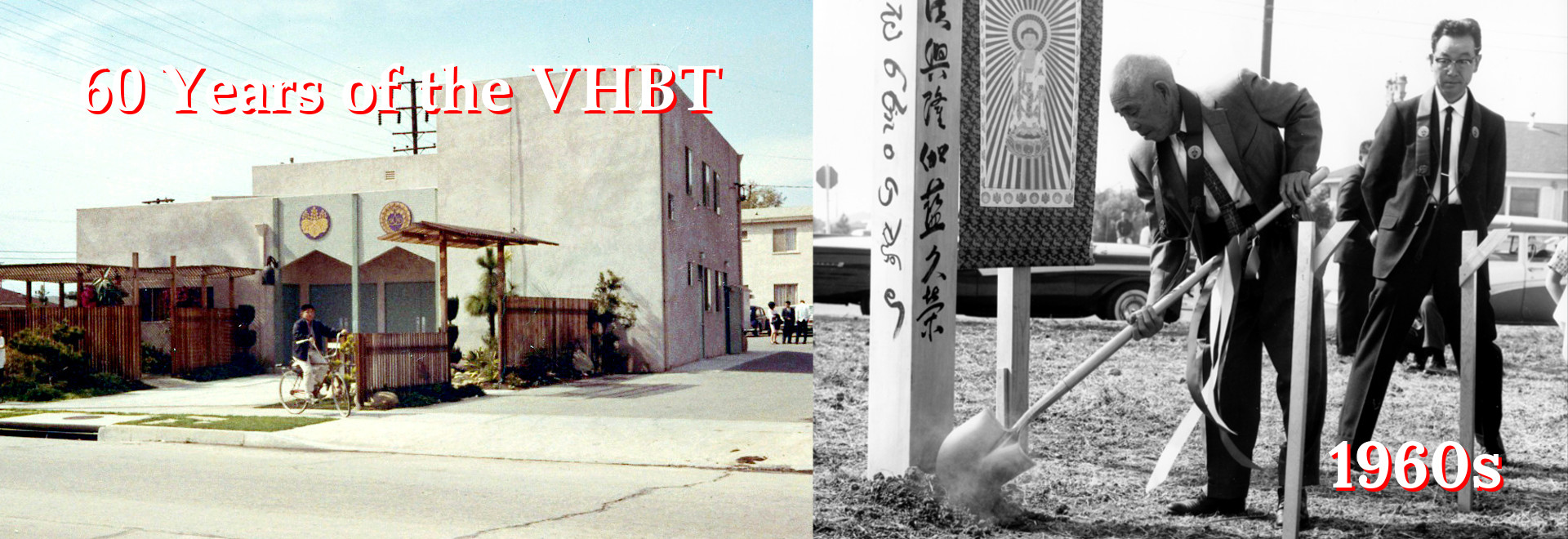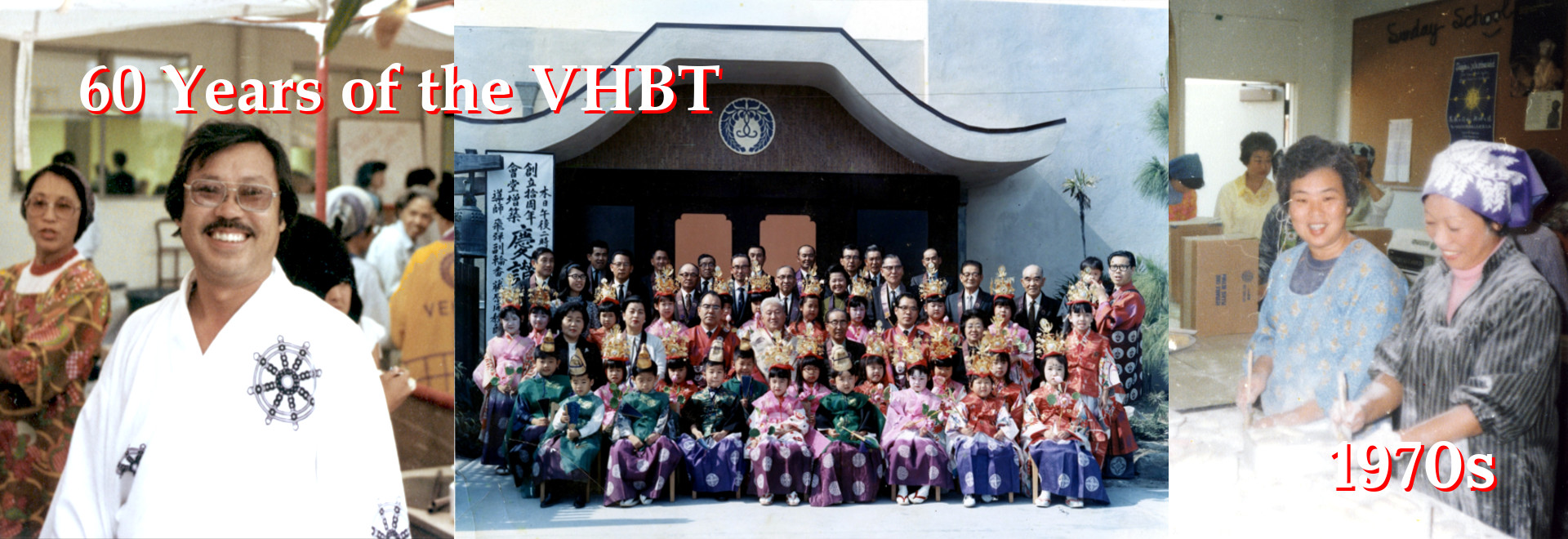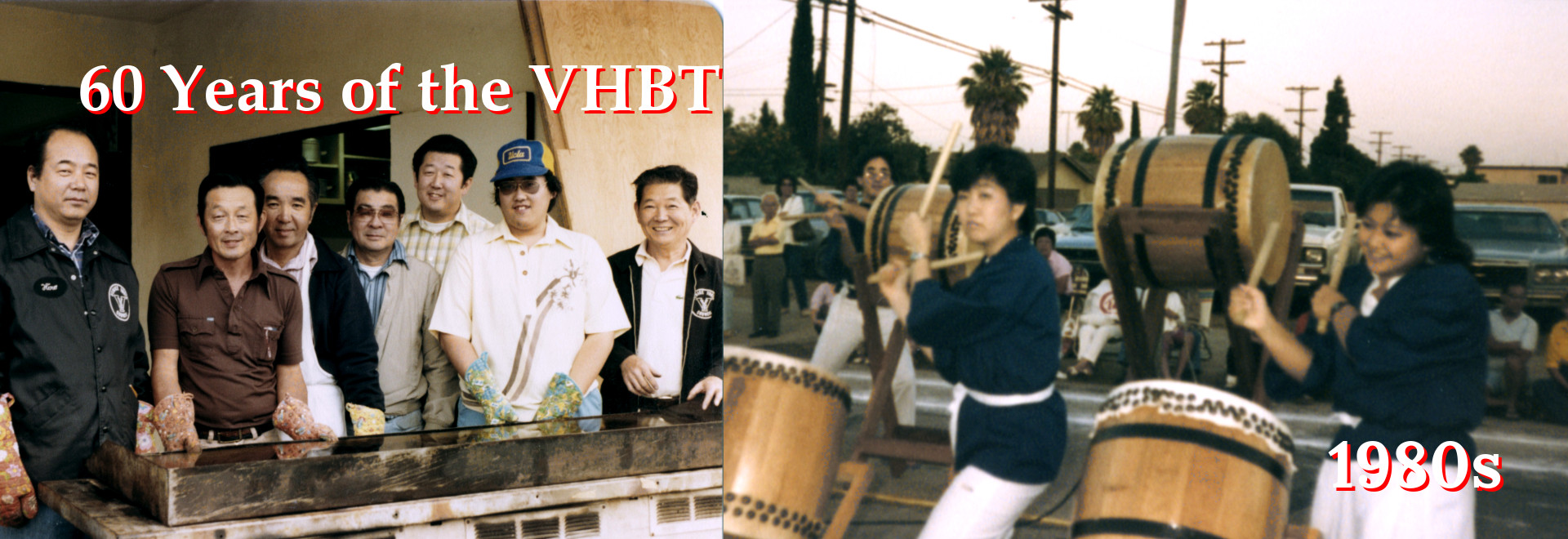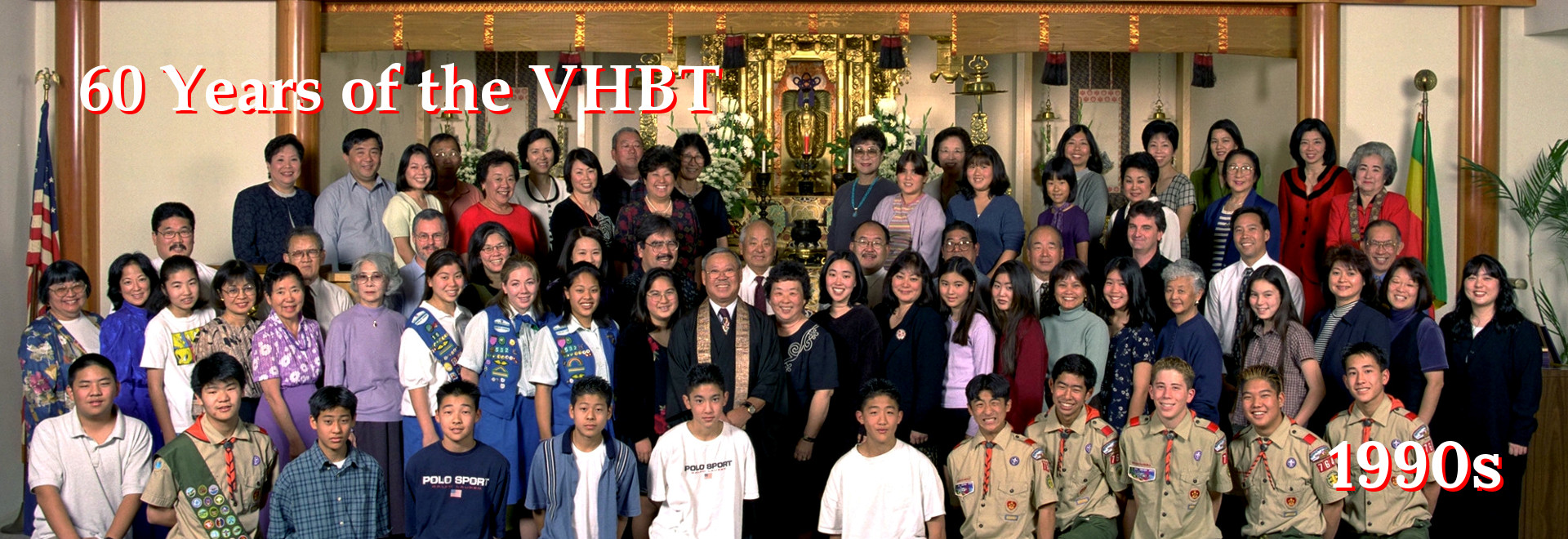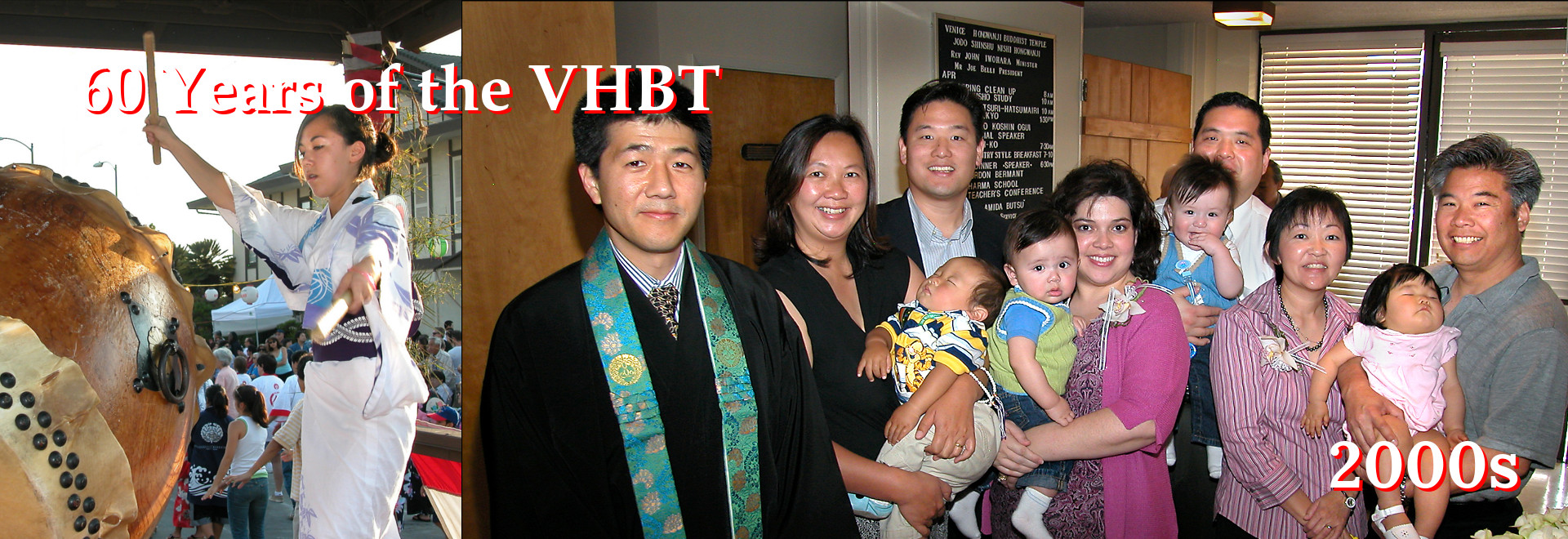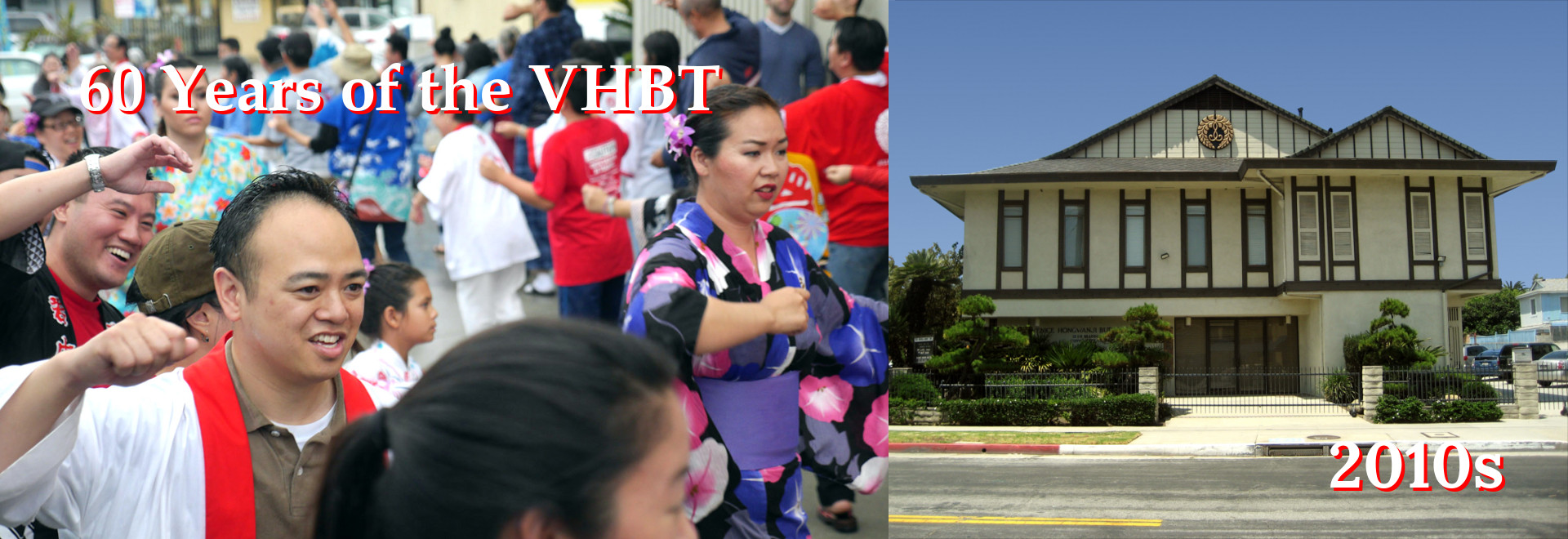John F. Kennedy wins the presidential election. The US Enters the Vietnam War. The IRA starts its fight against the British. Chubby Checker and The Twist start a new dance craze. A Soviet missile shoots down the US U2 spy plane, aluminum cans are used for the first time. The US announces 3,500 American soldiers are going to be sent to Vietnam, Xerox introduces the first photocopier, OPEC (Organization of Petroleum Exporting Countries) is formed. The first US weather satellite, the TIROS 1, is launched into space. To Kill a Mocking Bird was published. The world’s first female prime minister is elected. The average price for a home is around $13K. You could get a new car for $2,600. Gas is 25 cents per gallon. A loaf of bread costs you 20 cents.
In January of this very year of 1960, at the two-house lot on Culver Boulevard just west of Centinela Boulevard, the Venice Hongwanji Buiddhist Temple was dedicated at its first location. In the front house resided Reverend Ryuei Masuoka and his family, and the back was the house was used for temple services and other activities. Now, 60 years later, the Venice Hongwanji Buddhist Temple continues on. Our families have changed and our children have grown. We are lucky to have such a place. Let us think about what it serves as and the foundation it is set upon. Nembutsu or Namu Amida Butsu or “I return to the Buddha of Infinite Life and Light.”
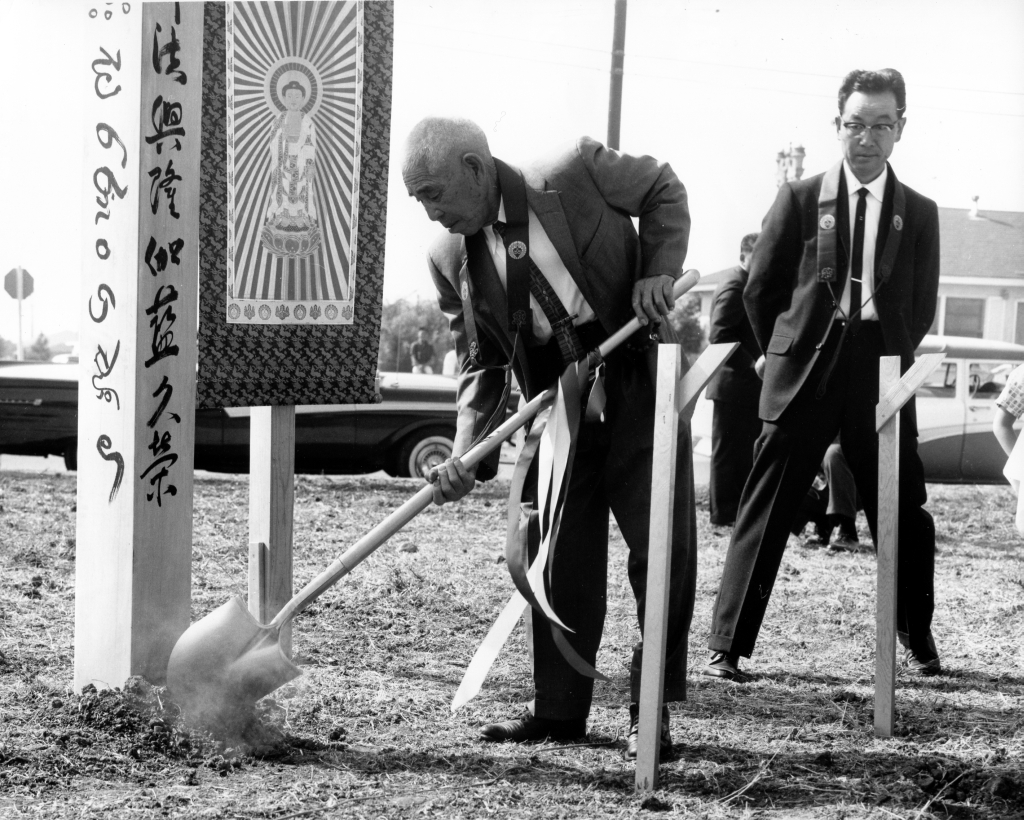
The five defilements and the five forms of suffering are common throughout the six courses; not a single being has ever been free of them. We are constantly assailed and afflicted by them. If there were a person not afflicted by such suffering, he would not belong to the group of ordinary beings.
From the Kyo Gyo Shin Sho by Shinran Shonin
Over these years it continues to be a safe place for those that need it. It is a place of gathering. It is a place built with hopes. These hopes are for future generations. The passage above is from Shinran Shonin’s major work the Kyo Gyo Shin Sho. The first sentence is about the world we live in and following is the truth about our current state of existence. The final speaks of Enlightenment or Buddhahood for those that can be free of the issues of the first two sentences.
In our tradition, don’t over think it too much. If you would like to look up the Five Defilements[1], Five Forms of Suffering[2], or Six Courses[3], please see the end of this article. The function of this passage is to remind us how difficult Buddhism is when following a practice. This is why we have the Nembutsu or say Namu Amida Butsu – I think on the Buddha of Infinite Light and Life, which helps us to find great gratitude in our everyday lives. We use the temple as a place to come together and be reminded of the Buddha’s Teachings and Amida Buddha’s efforts.
The Key to the last 60 years of temple life is to Just Come. Change is eminent. Ask yourself, “Am I the same person physically or mentally as I was 5 years ago?” Of course not. Because our needs are different, we have to continue to apply the teachings in different ways. Ask yourself, “What do I need now? Is it to come together as a community? Is it for your children or grandchildren?” Then just come. There are no expectations other than to be here when you can. If moving away from the defilements, the sufferings, the six realms is your goal, then work on them here where you can make mistakes and be accepted. If you worry about the future of your family and how they can get away from a materialistic life style and entangled world, then tell them to come. They can learn through meeting a community of Joy and Unity. Keep in mind again we are not Buddhas, so it is not always perfect, but we have the aspirations for it. Let us continue to journey on this path together. Open up communications with those that have grown at the temple, those that have moved away, and those that have not yet experienced the Buddha’s efforts.
Jodo Shinshu is not like other paths of Buddhism. It does not have a specific direction or thing to do. It is more about realizing, accepting, and repaying what we have received already that makes us who we are today. Jodo Shinshu Buddhist are constantly looking within to see truth, and because of this, we can empathize with others and act with compassion. Remember this phrase, “See a need, fill a need.” Let’s make it one our slogans.
I began this article with a flashback of 60 years ago. The world was very different looking from what we know today. Still the problems that we deal with like money, politics, and the world around us continue to hold us back. I began this piece with John F. Kennedy and his election. It is only fitting I end with what he said at his inaugural address and use it as a call to all those that have been touched by the past Buddhas and pioneers that have sacrificed for us to receive Shakyamuni Buddha’s Teaching: “ASK not what your country can do for you – ASK what you can do for your country.”
Buddhism is already working within you at many different levels. Being Buddhist is a way of life and so much more. Sharing it is a calling. Listen to the Buddhas like Hisaoka, Kambayashi, Kamoto, Kato, Kiyohara, Nakagiri, Okamoto, Onishi, Ozaki, Sugino, Tanaka, Yamamoto, Shinmoto, Fukushima, Masuoka, Mohri, Maeda, and the many more to follow… (names are from https://vhbt.org/who-are-we/history/) Keep them in your Heart, Listen to their Voices, and Aspire to follow their footsteps.
Just Come. ASK not what your country can do for you – ASK what you can do for your country. See a Need, Fill a Need.
HAPPY 60TH BIRTHDAY VENICE HONGWANJI BUDDHIST TEMPLE!!!
Gassho. Namo Amida ButsuRev. Kory Quon
Venice Hongwanji Buddhist Temple
November, 2019
Footnotes:
[1] Five defilements (gojoku) – Defilements or impurities that make this world of ours a difficult place in which to pursue Buddhist practices effectively for the sake of enlightenment. The five types of defilements, which prevail in the age of mappo, are: defiled age (kalpa) when war, pestilence, famine, natural calamities, and pollution abound; defiled view (drsti), characterized by confrontation of ideologies, confusion of values, and prevalence of nihilistic attitudes; defiled passion (klesa), the flourishing of greed, anger, ignorance, and evil ways; defiled beings (sattva), an increase in human life of inferior quality, dull minds, weak bodies, and egotism; and defiled life (ayus), the wasting and shortening of human life. The five are ultimately interrelated with each other: defilement of the age is caused by defiled views, which arise from the defiled passion that controls the lives of defiled beings, who manifest defiled life. – Shinranworks.com
[2] Five Forms of Suffering – These are the elemental aggregates describes the mental and physical state of things in our lives: form (or material image, impression) (rupa), sensations (or feelings, received from form) (vedana), perceptions (samjna), mental activity or formations (sankhara), and consciousness (vijnana).
[3] Six Realms of Existence – A six-fold division of all samsaric life into the realms of hell, beasts, hungry ghosts, human beings, fighting demons, and heavenly beings.
